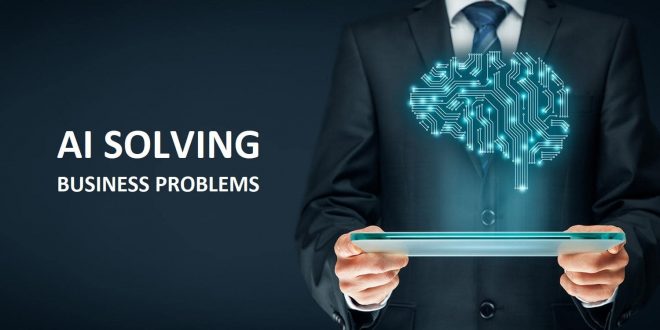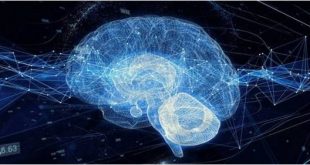AI Solving Business Problems: Cloud-based scalable and dependable services, such as SaaS and PaaS, are now being offered by forward-looking companies as plug-and-play solutions powered by artificial intelligence for various business problems.
Artificial intelligence is gaining traction across all types of industries. In the AI software market, most of which consists of AI as a service software (AIaaS), the annual growth rate will reach 34.9% by 2025, making the market worth over $100 billion. One caveat, however, is that it sounds like a good idea, and one size does not fit all.
To gain a competitive advantage and distinguish their company from others, companies who wish to use AI as a differentiating technology require a strategy and planning, which almost always involves a customized solution.
To quote Sepp Hochreiter (a famed AI algorithm developer), “instead of quickly building a team, it’s better to use external experts as well so that your project will be completed on time and with the least possible risk.”.
One cannot find the best talent fast and worse, and nothing can be judged during the hiring process; you will only learn about the quality years after the fact.
The pricing of that service is much higher than most AI off-the-shelf solutions available online today. It is claimed that using AIaaS can effectively offer an “all-in-one” solution for all businesses, but those company-specific AI services are rarely available.
AI modules are services provided by companies that use AI to automate everything from finding obsolete items in a warehouse to optimizing customer contact lists and preventing production anomalies of many different products.
The automated industrial production AIaaS market is populated with several companies. These providers typically present case studies that involve limited and generic data sets, with results based on individual cases. A generic AI solution will, however, produce generic results.
For example, when a factory produces shoes compared to smartphones and bicycles, training algorithms to detect wear and tear will differ.
The companies developed custom solutions for their clients for “real” AI – which involves intelligent modules that manage and change production due to environmental factors.
Customers who have bad experiences with AIaaS are more likely to avoid the experience in the future, feeling it is a waste of time.
Furthermore, it turned out that AI processing of those use cases did not yield the expected or promised results.
It has even been alleged that some cloud companies are intentionally misconstruing AI solutions – giving the impression that they are viable solutions when they fully realize they aren’t.
You May Like Also: AI Solving Breast Cancer
AI solutions are likely to fail if the technology repeatedly proves itself to those who benefit from them.
Using a standardized solution makes everything easier to understand and performs well almost instantly.
AIaaS has attracted researchers by allowing them to run complex experiments without relying on an entire IT team to manage the various aspects of the infrastructure they need.
AIaaS may enable access to the system by individuals without any AI expertise in the future.
Despite this, automated online services can contribute significantly to industrial production at their current levels if they are appropriately managed.
If done correctly, artificial intelligence can provide plenty of benefits to the industry. Companies should only consider utilizing AI if they do a deep dive into the available services.
Is there room for customization with this solution? The service provides what type of support? Based on your use case, how does the algorithm handle your data?
While shopping around for AI services, companies need to ask themselves the following questions. Companies should work with providers who can provide concrete answers backed up by real success statistics.
AI applications require a high level of expertise, as do all new developments that enhance business activity.
Most of the engineers who work for large cloud companies are well versed in these fields.
Helping the customer create customized solutions provides more value by developing solutions for almost any client’s issue.
It would be helpful to examine whether such a service can be offered – but the current system is not the best.
Five business challenges AI Solving Business Problems
Despite their differences, every business faces the same problems, regardless of its industry.
Many of these business challenges can be addressed using artificial intelligence, which is currently the technology best suited to solve.
Using AI, specific companies are addressing five key challenges businesses face today.
1. Financial fraud
Giving customers what they want comes from handling more mobile and digital transactions.
On the other hand, it may also provide criminals with the opportunities they want, namely, the ability to capture sensitive personal information and financial details.
Consumers increasingly demand faster transactions, causing companies to believe that fraud can be prevented by scanning each transaction for potential fraud.
Using artificial intelligence has become the only solution to facilitate such quick transactions for companies.
Sift Science and Feedzai use adaptive algorithms and machine learning algorithms to sort and assess data in a matter of seconds.
This has dramatically reduced fraud, spammers, and the occurrence of financial crimes.
Many organizations have reduced fraud, chargebacks, and customer spam by partnering with Poshmark, DoorDash, and other companies.
2. Providing customer service
A brand’s customer experience is a vital part of the success of every company in the digital marketplace due to its immediacy.
Despite today’s quicker transactions, companies have a difficult time providing 24/7 assistance to their customers.
Companies are using AI to provide customer support across multiple channels, even when a human cannot assist.
With Agara’s AI-enabled support, B2C companies can provide a better customer experience. The real-time voice can quickly answer questions and provide informed responses, which gives consumers a human-like experience.
AI can also analyze a company’s complex software grid to give tips and assistance to operators, providing in-line answers to customer queries. AI is the only solution that can do these tasks simultaneously.
The similarity in the way companies sell intelligent virtual assistants (IVAs) and enterprise chatbots are available from companies like Verint Next IT.
Verint customers speak with a virtual agent, while Agara customers access trained experts and artificial intelligence tools.
Faster, more effective resolutions for customers are often a result of this kind of technology, which results in loyalty and better brand reputation.
3. Individualization
Customer convenience makes mobile shopping and using the internet appealing, but brands should still provide a tailored experience as they care about treating each customer as unique.
In a digital world where many people have access to the Internet, companies struggle to personalize each experience without the face-to-face contact of in-store transactions.
Among the first companies to use AI for individualized recommendations, Amazon was among the first.
AI-powered solutions are now capable of so much more than what was possible just a few years ago.
AI technology like Persado, for instance, is used to analyze formatting, word positioning, word selection, and more to create marketing messages that are tailored to the recipient.
Using artificial intelligence, Dynamic Yield determines what areas of the customer journey can be personalized.
For behavioral messaging, targeting, retargeting, and recommendations, this means studying, processing, and segmenting information.
A study shows the use of artificial intelligence to improve personalization has resulted in higher conversion rates.
4. Analysis of data
While all this data is advantageous, there are still challenges in structuring and utilizing it effectively.
IN THE LAST DECADE, the AI revolution has added another dimension to data analysis, but organizing data remains a significant challenge.
With DataRobot, artificial intelligence helps artificial intelligence. A technology invented by the company, automated machine learning (AutoML), has enabled it to automate parts of the machine learning and AI applications development process, including methods for data analysis.
AI-powered data analysis processes can be improved rapidly with the help of data engineers and software engineers working together.
The H2o.AI platform developed an open-source program that streamlines AI’s ability to perform transparent, accurate, and dependable analyses.
Its platforms help finances, insurers, healthcare providers, manufacturers, and marketing firms make better data and management decisions.
5. Efficiencies
For increased productivity, companies must work smarter to maximize their workforce and processes. The best solution is provided by AI yet again.
Business continuity has become a challenge for Appnomic, which calls itself a “self-healing” enterprise.
IT issues are predicted and prevented using AI before they become problems that negatively impact productivity. Many industries have hired the company to use its solution, including financial, retail, and manufacturing.
Businesses would need to identify the problem and any damage that has been done without AI’s prediction capabilities. With artificial intelligence, the IT department does its jobs better and doesn’t deal with fires.
Many industries, including insurance, financial services, and healthcare, have legacy processes that impede their productivity in the digital age. Vidado aims to fix this problem with AI-driven technology.
The company turns paper processes into automated digital processes using AI to help these industries accelerate their digital transformations. Increasing productivity and reducing expenses are the results of greater efficiency.
Artificial intelligence rescues
The AI-based solutions offered by these companies are finally helping address age-old business challenges effectively.
Customers are served, transactions are secured, consumer interactions are improved, and better managed and productive data are contributed.
There is no silver bullet in artificial intelligence. Using artificial intelligence, Appnomic detects and fixes IT problems or alerts an operator when they arise. These solutions are only helpful if they’re used correctly and when they do.
How To Build A Business Case For Your AI Problem
In other words, what leads you to choose AI as your solution rather than AI as a possibility? As with any other business problem, building a business case for AI would be similar.
To implement successful artificial intelligence projects, one must first identify both a need and the desired outcome. Assess the feasibility of the project next.
To identify patterns and use them for subsequent decision-making, you’ll need to determine if you have sufficient data.
The technology must be sufficiently advanced so that you can accomplish what you need to do. The cost-effective option may be to use an existing solution.
Additionally, you’ll need to make sure your success has a return on investment. What are your plans for measuring your results, and what will you do with these new insights?
An enormous undertaking can be the implementation of artificial intelligence. Taking an incremental approach to solving a business problem will improve your time and cost efficiencies in the future and make you more competitive now.
FAQs:
What are the three significant challenges in artificial intelligence?
Professor Sandel teaches about new technology’s ethical, social, and political implications and says advanced AI technology raises various ethical issues. There are multiple aspects of privacy and surveillance, racism, bias, and human judgment to consider.
What impact will AI have on the future of business?
Customers receive more personalized service when businesses use artificial intelligence. It is possible to analyze vast amounts of data more efficiently using AI. Patterns in information can be identified fast, such as past purchases, preferences, credit scores, and others.
Is robot AI going to replace humans as workers?
AI will replace 85 million jobs by 2025, according to a report from the World Economic Forum. Artificial intelligence contributes to rapid changes in the human race, and some jobs will disappear as a result. However, others will be created as a result of AI.
 Next Tech Magazine Get The Latest Technology Updates
Next Tech Magazine Get The Latest Technology Updates







